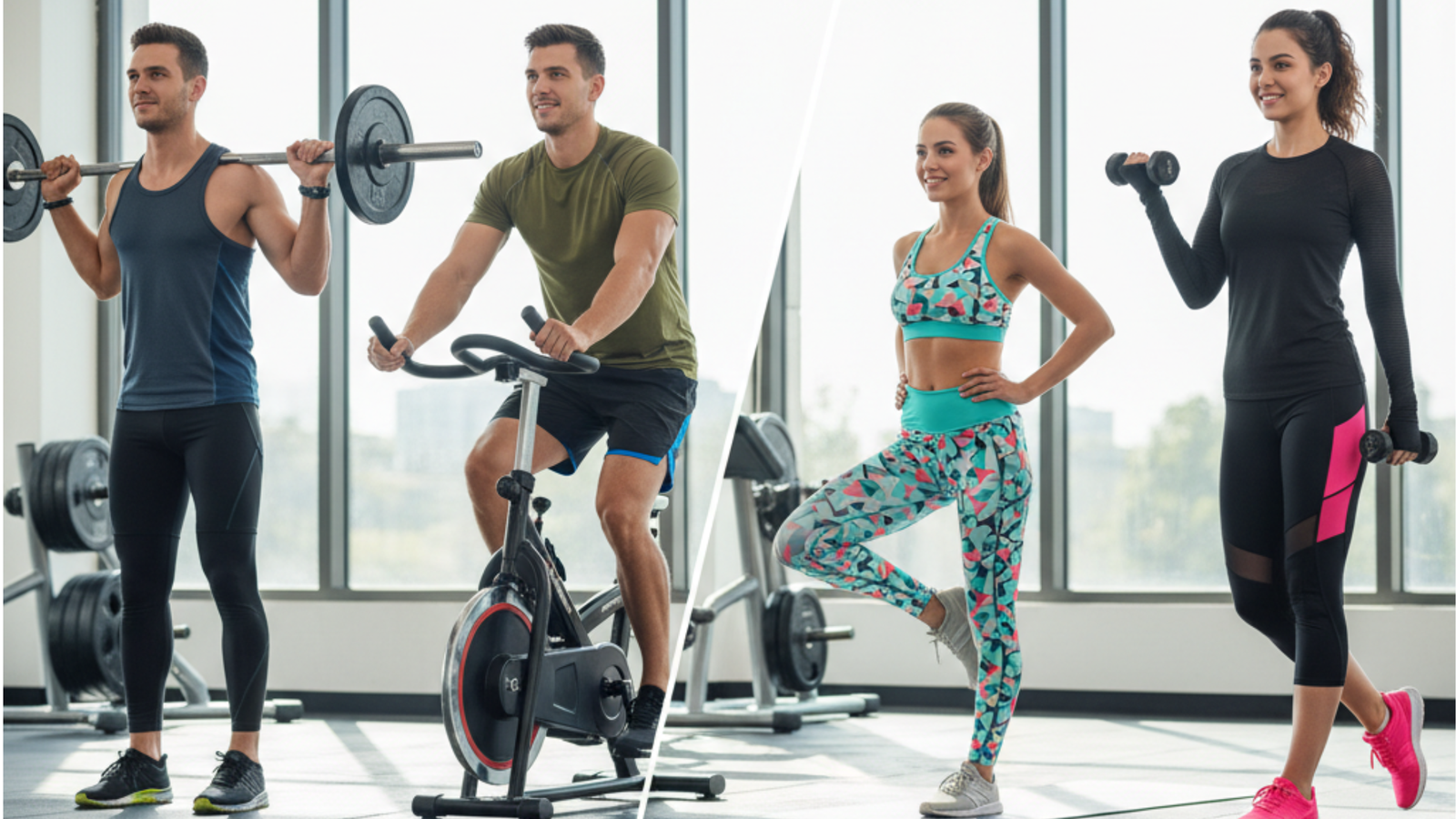Blog
Men’s vs Women’s Activewear: What Makes the Design Different?

In the sportswear or fashion industry, there is a clear distinction between men’s and women’s preferences. But what makes it different? What factors impact the clear difference in activewear for men and women?
Well, mainly it comes down to design, functionality, and comfort level. Men typically prioritize comfort and flexibility in their movements.
Women, on the other hand, often look for performance features that support various fitness activities — especially with the rise of yoga wear trends in 2025, where style, fit, and breathability matter more than ever.
So, how does the design make any difference in men’s and women’s activewear?
Let’s find out.
Gender Differences in Activewear Design: Preference Value
Male consumers often prefer to purchase high-quality products. They want their activewear to last longer and be more durable so it can handle the rough style of sports or an intense workout. Yes, style and looks matter too, as clothes aren’t supposed to be functional, but stylish as well.
On the other hand, women care a lot more about the colors in their gym activewear. They love to display their personality through every attire they wear. It means women are looking for activewear that has colors, a cool and comfortable design, and an outfit that looks good on the eyes too.
Men vs Women’s Workout Clothing Comparison
So, what makes men’s and women’s activewear different?
Here are some factors to consider:

-
Fit and Body Structure
Women’s activewear is typically designed to fit a narrower waist, wider hips, and a more prominent chest area. That’s why, often, some gym sets for women feature sculpted leggings with supportive waistbands.
Additionally, you may also find activewear with compression fabrics that shape and ease movement. As for men’s activewear, it tends to cater to broader chests and shoulders, with looser fits around the torso and thighs to ensure they can perform without any restrictions.
-
Fabric and Flexibility
Both men and women reap the benefits of moisture-wicking fabrics, but there’s a notable difference in activewear. Women’s gear usually features softer, stretchier materials, making it great for yoga, Pilates, or cardio sessions.
On the other hand, men’s gym clothes often feature tougher fabrics that can withstand intense training or weightlifting without tearing or losing their shape.
For example, women might prefer seamless leggings for a comfortable fit during those long workouts. Meanwhile, men often choose workout gym shorts with reinforced stitching so they can move around freely without worrying about wear and tear.
-
Functionality and Support
The differences in functionality really showcase how design and science come together. For instance, women’s gym tops typically have built-in bras or layered support to keep everything stable, whereas men’s tops prioritize breathability and flexibility in the shoulders.
You also see that with women’s leggings, which are specifically designed to avoid any transparency when stretched, a feature that is often overlooked in unisex options.
When it comes to men’s gym shorts, they usually have longer inseams to help prevent chafing and ensure decent coverage when squatting or running. Women’s shorts tend to be shorter and lighter, allowing for better airflow and emphasizing leg movement.
These differences really highlight a better understanding of what works for each gender in terms of comfort and confidence.
The Right Gym Gear for Workout Routines
Choosing the right gym gear for your workouts largely depends on understanding your body and its movements. For instance, men often focus on support when they’re lifting weights, while women usually seek out flexibility for more dynamic routines.
Take yoga or dance enthusiasts, for example, they tend to go for breathable and stretchy leggings in Dubai. Meanwhile, runners and weightlifters might prefer compression shorts that help with their performance.
Both men and women can really benefit from fabrics that breathe, seams that fit well, and moisture-wicking tech; these are key to staying cool and comfortable throughout any workout.
Redefining Activewear for a Modern Fitness Culture
Fitness has become a lifestyle priority, and today’s gym wear trends reflect that shift. The lines between men’s and women’s gym wear are becoming more fluid as designers focus on combining performance, comfort, and style. The result is activewear that’s more inclusive, versatile, and aligned with different body types and workout preferences.
So, when it comes to men’s vs women’s activewear, it’s not really a competition; it’s all about thoughtful design. Each item, whether it’s leggings or a gym top, is crafted to fit the specific anatomical and style needs of whoever is wearing it.
Conclusion
When it comes to men’s vs women’s activewear, the difference lies in thoughtful design, tailored fit, and performance-driven functionality. Both genders value comfort, durability, and style; yet, each requires clothing designed to support the unique movements and needs of their respective workouts.
Whether it’s supportive leggings for women or breathable workout shorts for men, the right gym gear can boost confidence and performance.
If you’re looking to buy gym leggings in Dubai, Made by Tory offers high-quality activewear crafted for comfort, flexibility, and everyday movement. Designed to empower every fitness journey, Made by Tory’s products support style and performance together.
FAQs
-
What makes the design different in men’s vs women’s activewear?
Men’s activewear typically focuses on durability, breathability, and unrestricted movement, whereas women’s activewear emphasizes support, flexibility, and body-contouring fits. Both are designed to meet the anatomical and performance needs of each gender during various workouts.
-
How do fabrics vary in men’s vs women’s activewear differences?
Women’s activewear often uses softer, stretchier fabrics ideal for flexibility and flow, while men’s activewear tends to use sturdier, more structured materials that withstand heavier training. Both still commonly use moisture-wicking performance textiles.
-
Why do sizing and fit differ in men’s vs women’s activewear?
Men’s activewear is designed around broader shoulders and a straighter torso, offering roomier fits. Women’s activewear considers narrower waists, wider hips, and chest support needs, resulting in more sculpted and body-shaped fits for comfort and performance.
